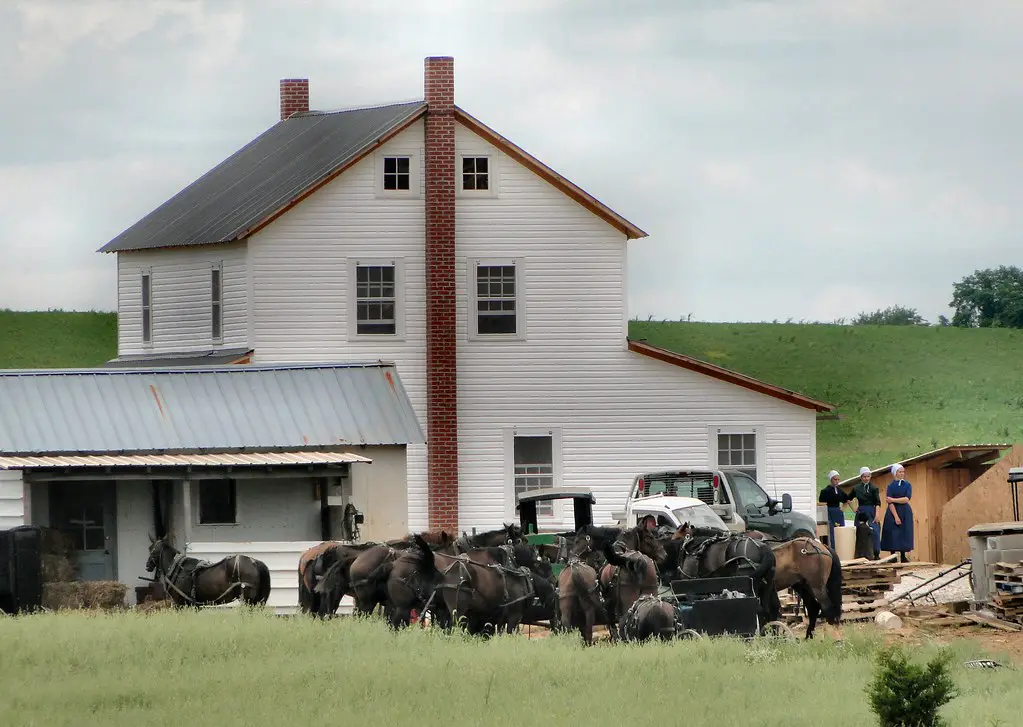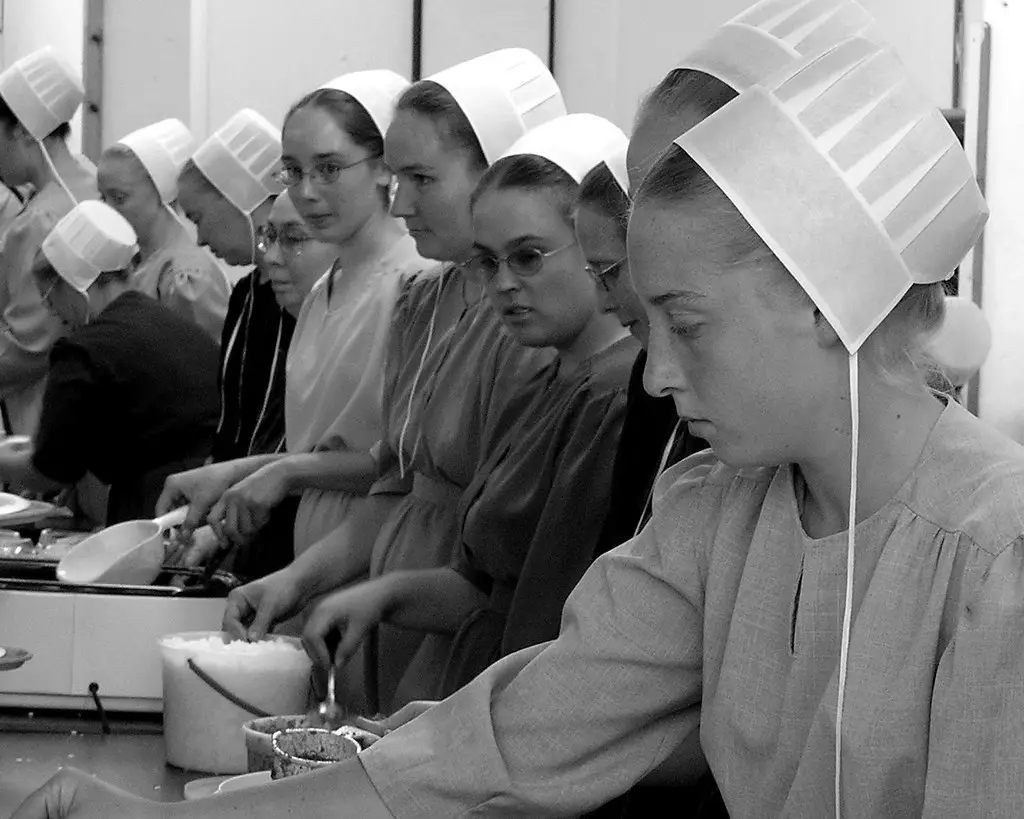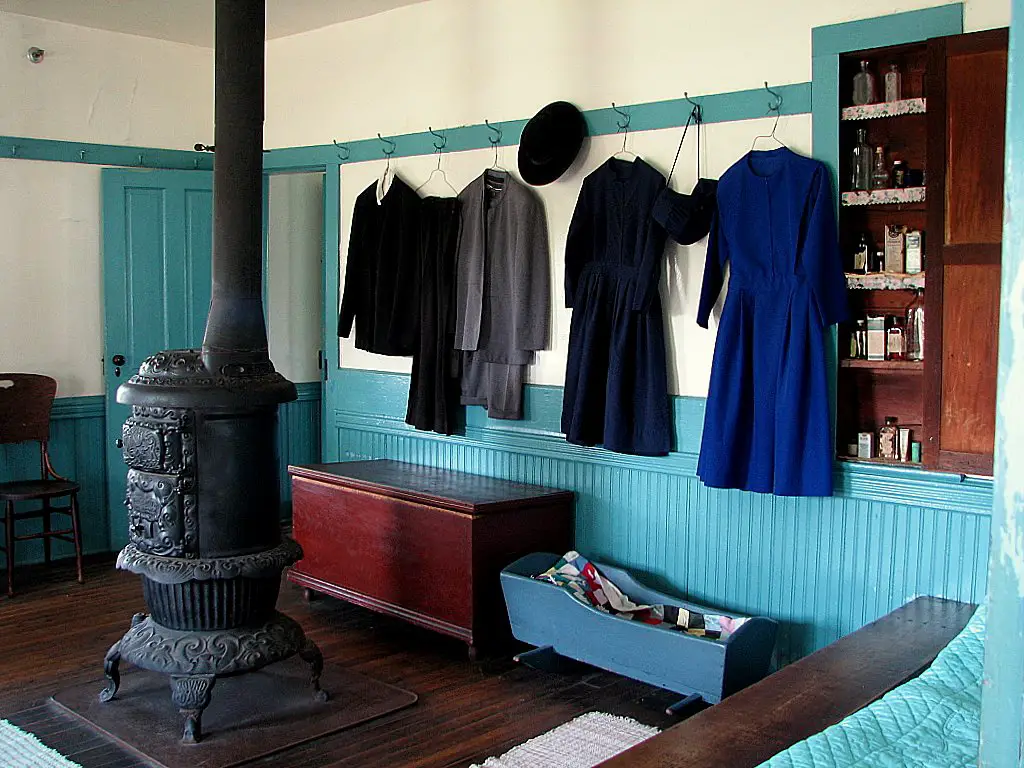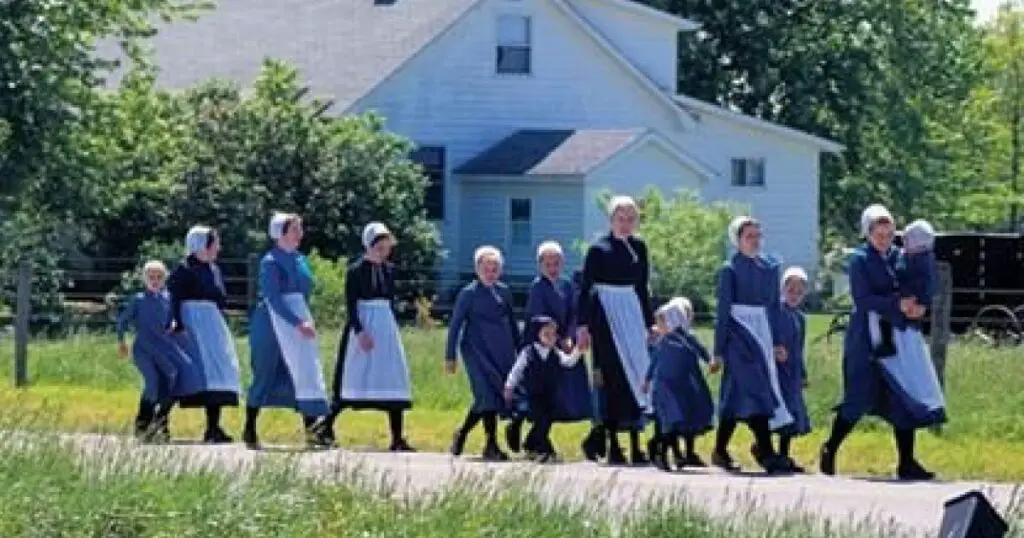The Amish community has long fascinated outsiders, leading Hollywood to portray them in ways that are often exaggerated, misleading, or outright false. From films to TV shows, pop culture has created myths about Amish life that fuel misunderstandings about their beliefs, customs, and daily routines. While the Amish do lead a unique lifestyle centered around faith, simplicity, and community, they are far from the one-dimensional characters often depicted on screen. Here are 13 common myths about the Amish that Hollywood got completely wrong.
1. The Amish Don’t Educate Their Children Beyond 8th Grade

It’s true that most Amish children only attend school until eighth grade, but that doesn’t mean their education stops completely. After formal schooling, Amish youth continue learning through apprenticeships, hands-on training, and community-based instruction. They develop practical skills in farming, woodworking, business management, and homemaking, which are essential to their way of life. This form of education prepares them for adulthood in ways that traditional high school often does not.
Hollywood often presents this as a refusal to educate Amish children, which isn’t accurate. The Amish believe in a different kind of education—one focused on practical knowledge rather than standardized testing or college preparation. Many Amish businesses are highly successful, showing that their education system effectively equips them for real-world challenges. While they may not follow mainstream schooling, they are far from uneducated.
2. The Amish Are All Farmers

Hollywood often depicts the Amish as a farming community, but not all Amish make their living through agriculture. While farming remains important, many Amish now run successful businesses in carpentry, furniture-making, and construction. Others work in small manufacturing operations, retail shops, and even technology-free tourism businesses. The shift away from farming has been driven by land costs and economic changes.
Amish businesses are well-respected for their high-quality craftsmanship and strong work ethic. Many sell products to non-Amish customers, contributing to the broader economy. While some still rely on traditional farming, others have adapted to new industries that align with their values. The idea that every Amish person is a farmer is simply outdated.
3. The Amish Completely Reject Technology

While Hollywood often portrays the Amish as strictly anti-technology, the reality is more nuanced. Many Amish communities selectively adopt technology based on whether it aligns with their values and way of life. For example, some allow battery-powered tools, solar panels, or even cell phones for business purposes. Rather than outright rejecting modern advancements, they carefully evaluate each innovation’s impact on their faith and community.
The decision to use or avoid technology is made by local church leaders, meaning there are variations among different Amish groups. Some permit tractors with steel wheels, while others may use generators or even hire non-Amish drivers for transportation. This thoughtful approach ensures that technology serves their needs without disrupting their traditions. The idea that all Amish live exactly the same way with no modern conveniences is simply false.
4. The Amish Don’t Pay Taxes

A common Hollywood myth is that the Amish are completely exempt from paying taxes, but this isn’t true. Like other American citizens, the Amish pay property taxes, state taxes, sales taxes, and even federal income taxes. What they are exempt from is Social Security and Medicare taxes, but only because they do not participate in those government programs. Since they believe in caring for their own community rather than relying on public assistance, they opt out of these benefits.
Despite this exemption, Amish businesses still comply with tax laws, and employees working for non-Amish employers do pay into Social Security. Additionally, the Amish contribute to local economies through business taxes and land ownership costs. Their financial responsibility to their communities is taken very seriously, and they do not expect outside support. The claim that they live tax-free is a complete misunderstanding of their economic role.
5. The Amish Don’t Use Any Electricity

Hollywood often suggests that the Amish live in total darkness without any form of electricity, but that’s not entirely true. While they avoid being connected to the public electrical grid, some Amish communities use alternative power sources like generators, propane, or solar panels. Battery-powered lights, gas refrigerators, and diesel engines for farming are also commonly found in Amish homes and businesses. The key concern is not electricity itself but remaining separate from outside influences and maintaining self-sufficiency.
Different Amish groups have different rules regarding electricity use, and some are more lenient than others. For example, while Old Order Amish are more restrictive, New Order Amish might allow limited electrical use under specific conditions. This flexibility allows them to balance tradition with practicality, especially in farming and business operations. The idea that all Amish live without any modern energy sources is a Hollywood oversimplification.
6. The Amish Only Wear Black and White Clothing

Movies and TV shows often depict the Amish in dull, all-black outfits, but their clothing is more colorful than many people realize. While Amish dress is simple and modest, it often includes shades of blue, green, purple, and brown. Men’s shirts and women’s dresses can be found in deep, rich colors, though they avoid bright or flashy patterns. The overall goal is to maintain humility and uniformity rather than stand out with trendy fashion.
Each Amish community has its own dress guidelines, and some allow more variety than others. The specific colors and styles worn often indicate which group they belong to and their marital status. While Hollywood loves to show them in plain black and white, the reality is much more varied. Their clothing may be simple, but it’s certainly not limited to just two colors.
7. Amish Marriages Are Arranged

Many people assume that Amish marriages are strictly arranged by parents or church elders, but this isn’t the case. Amish individuals are free to choose their spouses, though they must marry within their faith. Dating happens within the community, often at social gatherings like singings and church events. Couples typically court for a period before deciding to marry.
Hollywood also fails to show that Amish marriages are based on love and mutual agreement. While they do not date in the modern sense, they take time to form connections before making lifelong commitments. Families may offer guidance, but the final decision rests with the couple. The idea that Amish marriages are forced or arranged is simply not true.
8. The Amish Live in Isolation from the Outside World

Hollywood often portrays the Amish as living in complete isolation, avoiding contact with the modern world. While they do maintain a separation from mainstream culture, this does not mean they are isolated or reclusive. The Amish are active participants in their local communities, frequently engaging in trade, business, and even social gatherings with non-Amish people. They are selective about what aspects of modern life they adopt, but they are not cut off from society.
The Amish participate in non-religious activities like farmers’ markets, auctions, and festivals, where they interact with people from all walks of life. They also form deep relationships with neighbors of different backgrounds, providing mutual aid and support. Though they limit their exposure to certain influences, they are far from the isolated, hermit-like figures that Hollywood often depicts. The Amish can have vibrant social lives within their community and beyond, even if those interactions occur on their own terms.
9. The Amish Are Opposed to All Modern Medicine

While many movies show the Amish rejecting modern medicine, this is not entirely accurate. The Amish do use modern medical treatments when necessary, such as for major surgeries or emergency care. However, they prefer to rely on natural remedies and alternative treatments for minor ailments. Their approach to healthcare is influenced by a deep trust in God and a belief in the body’s natural ability to heal, but this doesn’t mean they entirely reject modern medicine.
The Amish community often turns to family doctors or home remedies first, but will seek professional medical help when required. They are also known to use certain medications, such as antibiotics, but may avoid things like vaccinations, which they view as unnecessary. Their healthcare decisions are largely based on personal beliefs and community values rather than a strict opposition to modern treatments. Hollywood’s portrayal of the Amish as completely against modern medicine overlooks their nuanced approach to health.
10. The Amish Always Live Without Running Water or Indoor Plumbing

Many portrayals of Amish life in Hollywood depict them as living without basic conveniences like running water or indoor plumbing. In reality, some Amish communities do have modern plumbing, but they tend to make practical choices about how they use it. For example, some Amish homes may have well water or gas-powered water heaters but avoid the public sewer system to maintain their separation from the outside world. The community often focuses on maintaining self-sufficiency while still meeting basic needs.
The decision to use plumbing or other modern conveniences is made according to the beliefs and needs of the local Amish group. In some cases, families might even have a bathroom but without electrical fixtures like lights or fans. This thoughtful, community-driven approach reflects a balance between preserving tradition and meeting the practical demands of modern life. The assumption that all Amish live without plumbing or running water is an oversimplified stereotype.
11. The Amish Reject All Forms of Entertainment

Hollywood often shows the Amish as having no entertainment or leisure activities, but in reality, they enjoy many forms of recreation. While they avoid television, movies, and other media that could expose them to outside influences, the Amish are far from humorless or joyless. They participate in a wide range of social activities, such as games, dances, and singing. These activities foster strong community bonds and offer plenty of opportunities for fun and relaxation.
The Amish also enjoy family gatherings, reading religious texts, and playing music together. While their forms of entertainment may differ from mainstream culture, they are far from devoid of enjoyment. They often gather for “singings” where the community comes together to enjoy hymns and spiritual music. The idea that the Amish reject all forms of entertainment is a complete misrepresentation of their rich cultural life.
12. The Amish Live in the Past and Reject Progress

Hollywood often portrays the Amish as people who completely reject any form of progress, but this is not accurate. The Amish community selectively embraces modernity based on its alignment with their faith and lifestyle. For instance, they may adopt certain agricultural technologies or business practices that help them thrive, but they remain rooted in their religious and cultural beliefs. Far from rejecting progress entirely, the Amish approach modernity with careful consideration and discernment.
The Amish maintain a unique balance of tradition and innovation, ensuring that new advancements don’t erode their way of life. They often incorporate new tools or techniques in ways that align with their values, especially if those innovations don’t interfere with their community-centered, simple way of life. Rather than rejecting progress, they seek to preserve their traditional values while still adapting to changing circumstances. Hollywood’s portrayal of the Amish as living in a historical time warp overlooks their ability to integrate aspects of modern life when it aligns with their needs.
13. The Amish Never Leave Their Communities

A final myth often seen in Hollywood films is that the Amish never leave their communities, but this is far from true. While many Amish prefer to stay within their communities, there are opportunities for them to explore the outside world, especially during a period known as “Rumspringa.” During this time, young Amish adults are allowed to experience modern life before deciding whether to commit to the Amish faith permanently. This period can involve everything from driving cars to experiencing nightlife, and it allows young people to make an informed choice about their future.
Rumspringa is not a rebellion against Amish values, but rather an opportunity for self-reflection and growth. After this period, individuals can choose to return to the Amish faith and be baptized or leave the community permanently. Additionally, many Amish individuals do travel for business, work, or to visit family. The notion that Amish people are confined to their communities for life is a misconception that ignores their ability to experience the world on their own terms.
